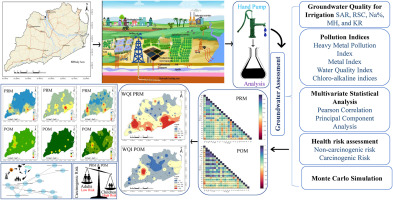
Understanding the 2014 Elk River Chemical Spill: What Exactly Is 4-Methylcyclohexane Methanol and Is It a Cause for Concern?
In early January 2014, over 300,000 inhabitants of West Virginia experienced a significant interruption in their daily routines when a substance known as 4-methylcyclohexane methanol (4-MCHM) was unintentionally released into the Elk River by Freedom Industries. With scarce information accessible about this chemical, a wave of apprehension and uncertainty surged through the impacted communities. Residents were advised against consuming or using their tap water, leading to a surge in demand for bottled water and raising many questions about the gravity of the situation.
So, what is 4-MCHM, and why has it generated such a reaction?
What Is 4-Methylcyclohexane Methanol (4-MCHM)?
4-MCHM is an industrial chemical predominantly utilized in the coal cleaning process. It has a pronounced licorice-like odor and is commonly stored in substantial amounts near industrial facilities. Although it is not typically present in household products, its significance in coal treatment makes it a crucial element in energy production sectors.
From a chemical perspective, 4-MCHM is classified as an organic compound. It has a molecular structure that includes a six-carbon ring (cyclohexane) connected to a methyl group (-CH3) and a hydroxymethyl group (-CH2OH). While it is often depicted in two-dimensional models, the molecule actually possesses a three-dimensional tetrahedral shape around each carbon atom. This geometric configuration arises from the repulsion between negatively charged electron pairs, ensuring optimal bond angles and distances.
Chemical Properties and Water Solubility
4-MCHM is predominantly a nonpolar compound, meaning it does not dissolve effectively in water—though its hydroxymethyl (OH) group contributes a slight degree of polarity. This results in the compound being “appreciably” soluble at low concentrations, allowing it to contaminate water without fully mixing. In fact, it is less dense than water, which means it tends to rise to the top.
Its nonpolar characteristics also make it fat-soluble, which means it could potentially be absorbed and stored in the fatty tissues of living organisms, including humans. The compound is clear, and while some news coverage pointed to a blue-green tinge in the affected water sources, that discoloration may have resulted from natural algae present during winter rather than the chemical itself.
Toxicology 101: Is 4-MCHM Hazardous?
One of the primary difficulties following the spill was the absence of comprehensive toxicological data on 4-MCHM. Although certain organic compounds are known to be significantly reactive or toxic, 4-MCHM does not seem to be one of those—at least not on a molecular level.
The composition of the compound suggests that it is unlikely to engage dangerously with proteins or DNA, which usually signifies serious toxicity or cancer-causing potential. However, the liver may metabolize the compound, possibly producing more water-soluble derivatives for elimination through urine. Ideally, the body would process and expel the substance before it accumulates to damaging levels, though this mechanism can vary by individual and species.
Animal Studies and Environmental Effects
The known toxicity of 4-MCHM is largely derived from animal research. The LD50 (the lethal dose for 50% of subjects) for rats is 825 mg/kg—a quite high dosage indicating moderate toxicity. In aquatic life, the compound begins to exhibit adverse effects at concentrations around 25 parts per million (ppm). This implies it could be harmful to fish and other organisms at elevated levels.
While extensive environmental damage from the spill was not reported, localized contamination may have harmed sensitive aquatic species immediately.
Uncertainties: Impurities and Long-Term Consequences
Probably the most concerning aspect of this incident is the unknowns. Industrial-grade chemicals like 4-MCHM are not always produced with high purity. In fact, the standards for its production differ significantly from those for pharmaceuticals or lab-grade chemicals. Thus, the bulk 4-MCHM used by Freedom Industries may have contained impurities—some of which could pose more risks than the compound itself.
Furthermore, there are no long-term studies available regarding how 4-MCHM or its metabolic byproducts affect human health. Whether it leads to skin irritation with prolonged exposure, affects internal organs over time, or carries cancer risks remains unknown.
Public Health Responses and Precautions
In the aftermath of the spill, officials quickly moved to shut down public water access while they evaluated the situation. While this was inconvenient, it likely helped prevent broader exposure. Bottled water quickly sold out, and residents expressed their concerns about contamination and governmental responses via social media.
In the absence of comprehensive toxicological research, scientists and healthcare professionals advised caution. They recommended against drinking or bathing in the contaminated water until further assessments were conducted. The prevailing sentiment was “better safe than sorry,” particularly when facing an unknown substance.
Essential Takeaways